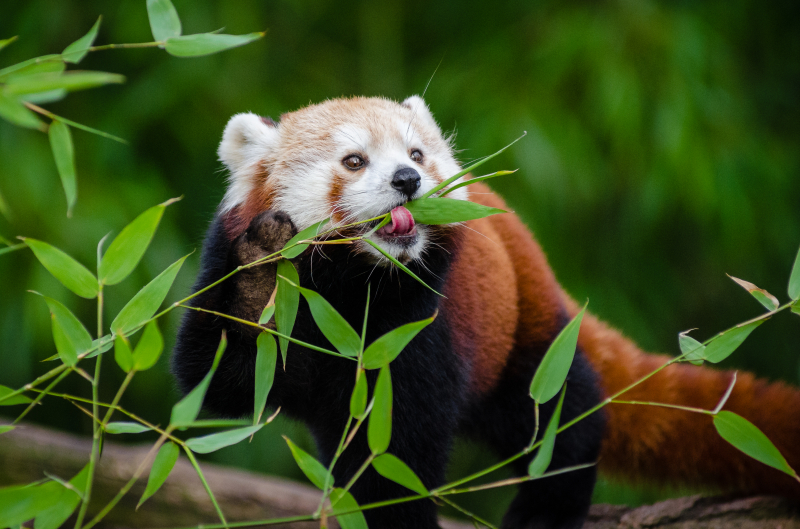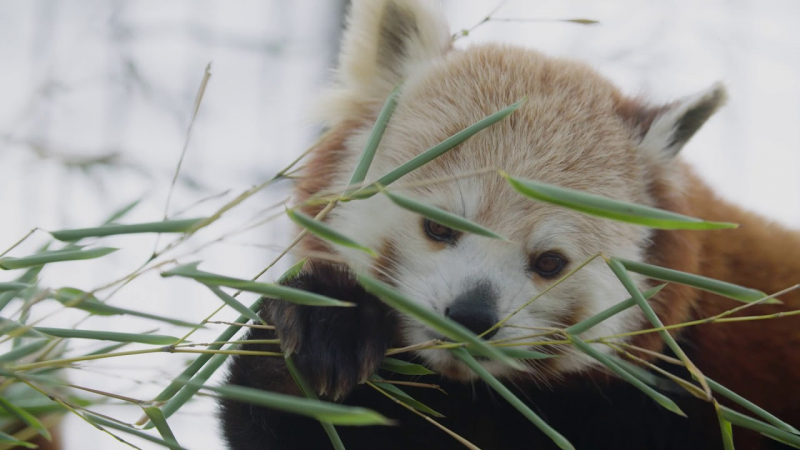The majority of what red pandas eat is vegetation.
Even though they are carnivores, red pandas rarely consume meat. The name "carnivore" describes their biological order, not their preferred diet. Red pandas have teeth and facial traits similar to cats because they shared an ancestor with other carnivores, but more than two million years ago they transitioned to a diet primarily on bamboo.
Red pandas developed adaptations to handle with their new grass-based diet, such as a pseudo-thumb, an extended wrist bone used to hold bamboo during feeding. A red panda must consume 20 to 30 percent of its body weight in bamboo each day since they still have a carnivore's digestive system. Fruits, insects, and bird eggs are among the meals that pandas will occasionally choose.
Red pandas prefer short, strong bamboo shoots than tall ones. They graze exclusively on the leaf tips and bamboo shoots. They must spend 13 hours a day eating and searching for food because this is such a nutritionally deficient food supply, and they can lose up to 15% of their body weight in the winter. Bamboo accounts for 90% of their diet, while the other 10% is mostly made up of berries, eggs, mushrooms, flowers, birds, and maple and mulberry leaves. Despite this, their digestive tract is not particularly adept at digesting the cellulose components of plant cells.











